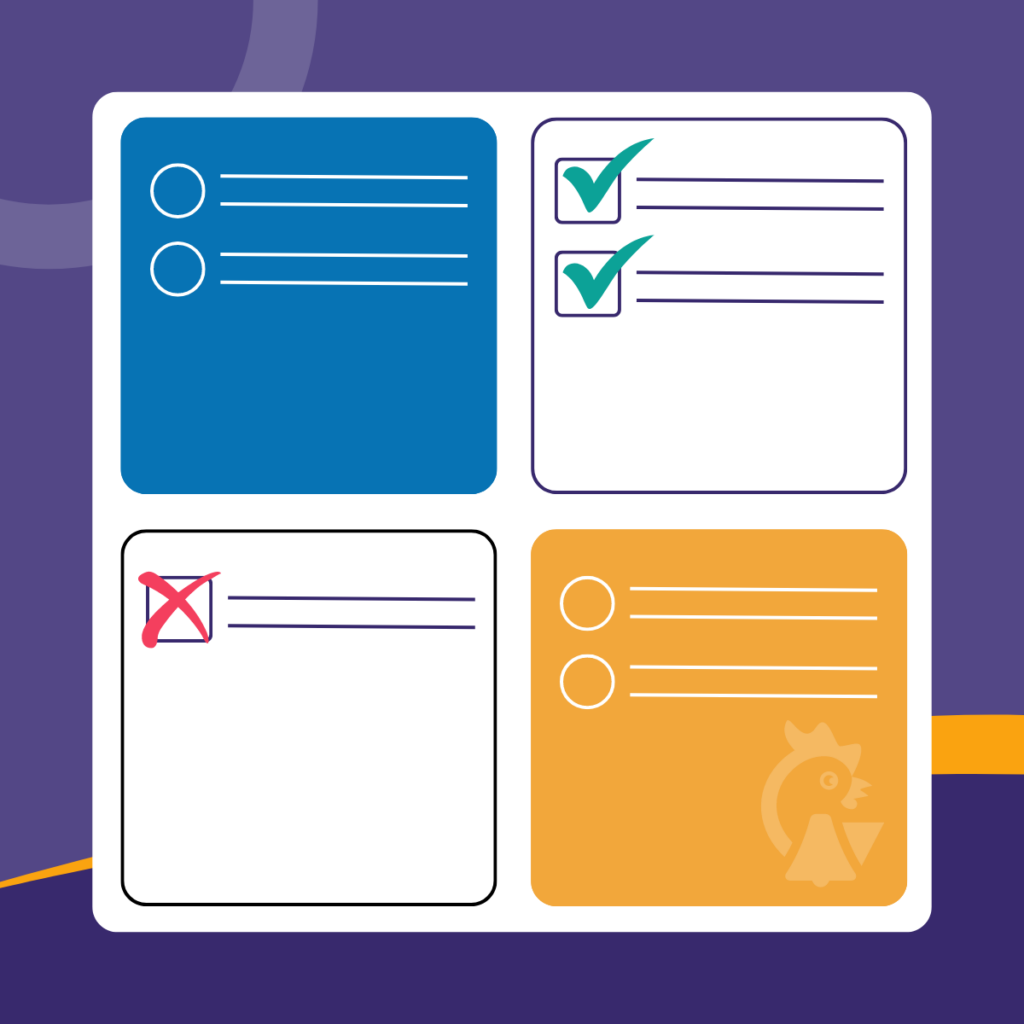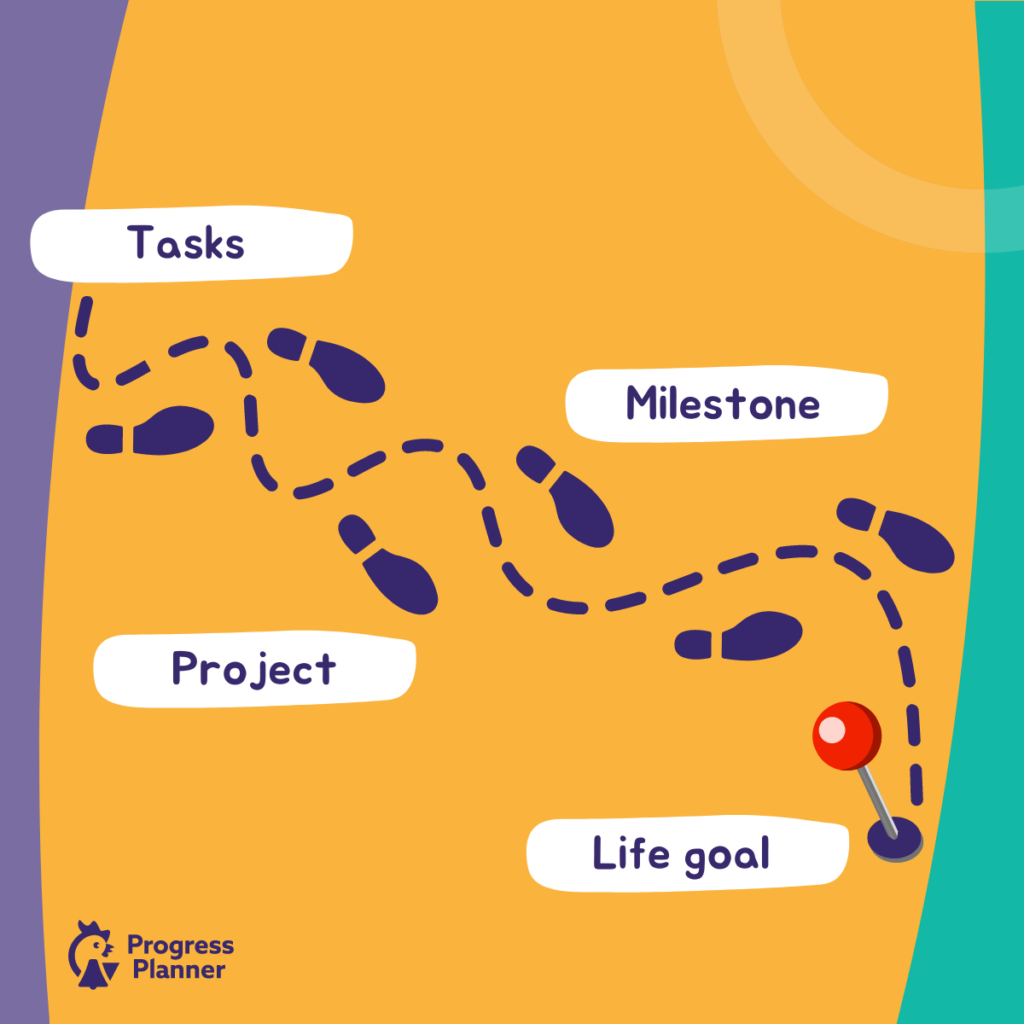People often set goals yearly and sometimes daily. These can be anything from improving their grades, losing weight, raising money, running a race, or learning a new skill. But how do you choose a goal that is best for you?
Your friends might aim to become better basketball players, get into Harvard, or lose 20 pounds. But that is their goals, and then may not align with what you want to achieve.
People will often adopt the same goals as their friends or let others set goals for them, but because you haven’t picked it, you’ll often not achieve that goal. To choose a goal, you need to determine what is right for you.
There are a number of ways in which you can pick a goal that is close to your heart and that gets you excited about getting out of bed every day. Well, I think it’s time that we got clear on what your goals are.

Where to start?
Here are a few questions to get you started on the road to choosing a goal that matters to you:
- What are my strengths and areas for improvement?
- Which skills or abilities would I like to develop further?
- Is there something new I am eager to learn?
- What are my future aspirations?
Answering these questions can help guide you in choosing a goal. But you really have to sit and think about this. No one said that goal setting is easy; it involves a lot of self reflection, and that can be difficult. But taking this time to so, it can help you write better goals that will have a significant impact on your life.
So, with your chosen method of note-taking, write down your answers, then select a weakness, an area for improvement, or something new you want to learn, and let’s turn it into a goal. However, keep a few things in mind:
Choose one goal to start with
Having multiple goals is great. However, having too many goals can be overwhelming. Focusing on a single goal at a time can significantly increase your chances of success.
When you spread your efforts across multiple goals, it can dilute your energy and attention, making it harder to achieve any of them. Begin with one clear, well-defined goal to maintain focus and build momentum.
Select a goal that genuinely matters to you
I know that goal setting can be scary, but picking something that is easy can hold you back. It’s essential to choose a goal that holds personal significance and aligns with your values and passions.
A meaningful goal will keep you motivated and committed, even when challenges arise. Avoid picking a goal just because it seems easy or convenient, as it may not provide the sense of accomplishment you think it will give.
Pick a goal that will benefit you in some way
Ensure your goal adds value to your life aspirations. Setting goals that are practical and relevant will vastly improve your life. These goals can be ones that can enhance your current skills, improve your well-being, or open up new opportunities for you.
For example, if you don’t intend to have regular access to a car, learning to drive might not be the most beneficial goal. Instead, focus on goals that align with your interests and plans.
Ensure the goal is achievable
We all have busy lives with many responsibilities, so it’s crucial to set realistic goals that fit within the constraints of your schedule. Consider your current commitments and time resources when choosing a goal.
Setting overly ambitious goals without enough time to achieve them can lead to frustration and burnout. Instead, opt for goals that are challenging yet feasible, allowing you to make consistent progress and maintain a balanced lifestyle.
SWOT analysis
Choosing the right goal can sometimes feel overwhelming. Creating a structured approach can make the process much more manageable. One effective method for identifying and refining your goals is the SWOT analysis. Standing for Strengths, Weaknesses, Opportunities, and Threats.
Conducting a SWOT analysis, you can gain a comprehensive understanding of where you currently are and identify areas for improvement, potential resources, and obstacles. This approach can help you set realistic and meaningful goals that align with your personal strengths and external opportunities, while addressing your weaknesses and mitigating threats.

Here’s how to conduct a SWOT analysis to guide your goal-setting process:
Strengths
What are you good at? What do others think you are good at? Reflect on your talents, skills, and areas where you consistently perform well.
This could include academic abilities, interpersonal skills, or technical expertise. Additionally, consider feedback from others, such as compliments or positive evaluations, which can provide insights into strengths you might overlook or underestimate.
Weaknesses
What areas or skills could you improve? What areas or skills do others think you could improve? Identify aspects where you feel less confident or areas where you frequently encounter challenges. This could involve personal habits, professional skills, or academic subjects.
Also, consider constructive criticism from peers, mentors, or supervisors, as their perspectives can highlight weaknesses you might not be fully aware of.
Opportunities
What people or resources around you can help you improve your weaknesses? What are some ways you can add value to your life? Look for external resources such as mentors, educational programs, or professional networks that can support your development.
Consider opportunities for growth, such as workshops, online courses, or community groups, which can help you acquire new skills and enhance your existing abilities, thereby adding significant value to your life.
Threats
What or who prevents you from showing your strengths? What is hindering you from achieving your full potential? Identify any external obstacles or internal factors that limit your progress or undermine your confidence.
This could include time constraints, lack of resources, or negative influences from others. Recognising these threats allows you to develop strategies to overcome them, ensuring they do not impede your journey towards achieving your goals.
After filling out a SWOT analysis, review the weaknesses, opportunities, and threats sections. Choose three or four items from these categories and write them as goals. Then, evaluate these goals by asking:
- Which goal will make me the happiest if I achieve it?
- Which goal(s) will add the most value to my life?
- Which goal(s) will be the easiest to achieve?
- Which goal(s) can wait?
Based on your answers, choose one goal to focus on first. Once you achieve that goal, you will already have two or three new goals at the ready to keep that momentum going and not having to start from scratch again.
5 Whys exercise
As we’ve already said, choosing the right goal is crucial for your success and personal fulfillment. One effective technique to identify the most meaningful goal is the “5 Whys” exercise. This method involves asking “why” five times to delve deeply into the root reason behind your desire to achieve a particular goal.

By repeatedly questioning your motives, you force yourself to consider the true significance of the goal, ensuring that it aligns with your core values and long-term aspirations. Here’s how the “5 Whys” exercise works in practice:
- Why do I want to improve my grades?
- Because I would like to get into a good university.
- Why do I want to get into a good university?
- Because it will provide better career opportunities.
- Why do I want better career opportunities?
- Because I want to have a successful and fulfilling career.
- Why do I want a successful and fulfilling career?
- Because I hope to ensure financial stability and personal satisfaction.
- Why do I want financial stability and personal satisfaction?
- Because I would like to lead a comfortable and happy life.
By the end of this exercise, you will have a clearer understanding of the underlying motivation behind your goal. This clarity helps you choose the most meaningful goals to pursue, ensuring that they resonate deeply with your personal aspirations.
When your goals ignite passion and excitement within you, you are more likely to stay dedicated and motivated, making it easier to overcome obstacles and avoid procrastination. This way, you can pursue your goals with a sense of purpose and commitment, ultimately leading to greater success and fulfillment.
Life goals, milestones, projects and tasks
Setting a goal is just the first step on the path to personal and professional success. To ensure you stay on track and make steady progress, it is crucial to break down your goals into smaller, more bite-size parts.
This more structured approach involves defining your life goals, next dividing them into milestones, breaking down milestones into projects, and further subdividing projects into tasks. By organizing your goals in this way, you can create a clear, actionable plan that helps you maintain focus, measure your progress, and achieve your aspirations.

Here’s how to effectively break down your goals:
Life goals
Start by defining who you want to become and identifying your life goals. Life goals are broad, long-term aspirations that reflect your values, desires, and vision for your future. They encompass what you ultimately would like to achieve in various areas of your life, such as career, personal development, health, and relationships.
Articulating your life goals provides a roadmap and a sense of direction, helping you stay focused on what truly matters. When you have chosen your goals, it is helpful to break them down into manageable parts.
Milestones
Your life goals can then be divided into milestones, these are significant achievements that you’ll make along the way. Milestones are intermediate targets that mark progress. They serve as checkpoints that allow you to measure your progress and celebrate your achievements.
By setting milestones, you can break down a seemingly insurmountable life goal into smaller, more attainable steps. For example, if your life goal is to become a successful entrepreneur, milestones might include completing a business course, developing a business plan, and launching your first product.
Projects
Each milestone can be broken down into projects, which are specific initiatives or efforts required to reach the milestone. Projects are more detailed than milestones and involve concrete plans and actions. They represent the individual components of a milestone and require careful planning and execution.
For instance, if your milestone is to develop a business plan, the associated projects might include conducting market research, drafting the business plan, and seeking feedback from mentors or advisors. Projects are essential for making steady progress toward your milestones and, ultimately, your life goals.
Tasks
Finally, projects consist of tasks, which are actionable steps that can be completed to progress towards the larger goal. Tasks are the smallest units of work in this hierarchy and are highly specific actions you need to take to complete a project. They are often time-bound and can be checked off once completed, providing a sense of accomplishment and momentum.
For example, tasks for the project of drafting a business plan might include outlining the business model, writing the executive summary, and compiling financial projections. Breaking projects into tasks ensures that you can manage your time effectively and make consistent progress.
By systematically breaking down your life goals into milestones, projects, and tasks, you can transform your long-term aspirations into achievable, actionable steps. This approach makes large goals more manageable and provides a clear structure for tracking your progress and maintaining motivation.
You’re now ready!
Now that you know what goal you want to achieve, the next step is to consider the type of goal that would best suit your ambitions. Different goals require different approaches and planning strategies, and selecting the right type of goal can make a significant difference in your ability to achieve it.
In an upcoming post, we will delve into how to pick the type of goal that aligns best with your aspirations and the methods you can use to ensure it complements the goal you have chosen. This will provide you with the necessary tools and insights to create a robust and effective plan, propelling you toward success with clarity and purpose.
Stay tuned for more guidance on tailoring your goal-setting process to your specific needs and aspirations, and continue your journey toward becoming the person you want to be with confidence and determination.
